Decades of careless human actions are destroying habitats and endangering the lives of future generations.
There is no denying the fact that our environment is changing for the worse. Hundreds of studies show that climate change is happening and affecting all life around us.
However, many may be unaware of the specific environmental issues that have led to these changes.
Terms like “climate change” and “genetic modification” are commonplace, but without additional information, it is difficult to see why they actually matter.
To complicate the matter, many of these environmental problems are linked to one another. The key is that they are all important challenges that need to be confronted.
Let’s examine the 30 biggest environmental issues facing our planet today and why they should matter to you.
List of 30 Biggest Environmental Issues Today
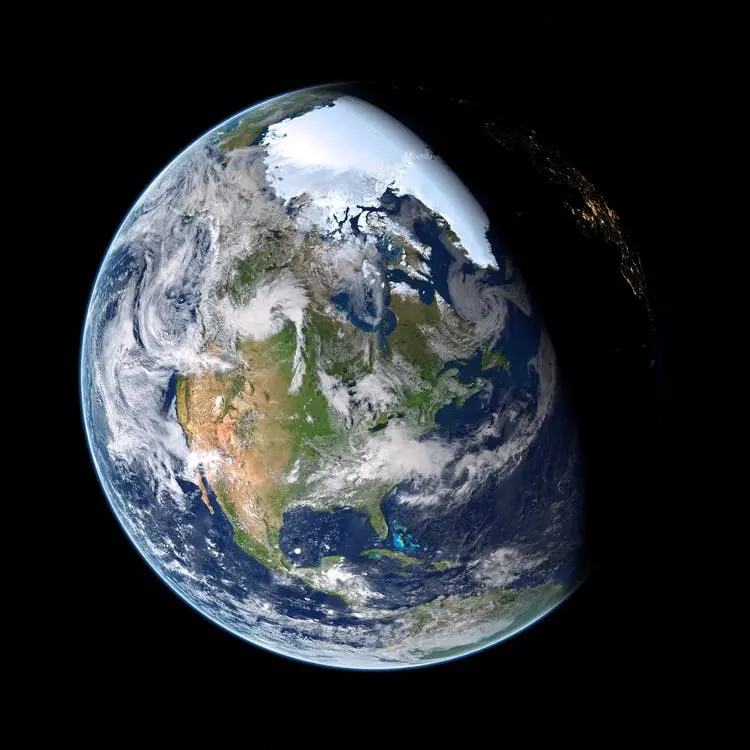
- Genetic Modification
- Soil Degradation and Contamination
- Waste Production
- Waste Disposal
- Population Growth
- Water Pollution
- Drinking Water Contamination
- Deforestation
- Urban Sprawl
- Overfishing
- Acid Rain
- Ozone Layer Depletion
- Ocean Acidification
- Air Pollution
- Lowered Biodiversity
- The Nitrogen Cycle
- Natural Resource Depletion
- Transportation
- Polar Ice Caps
- Climate Change
- Public Health Issues
- Rainforest Loss
- Ecosystem Destruction
- Waste from Renewable Energy
- Food Safety
- Mining
- Nuclear Waste
- Nanoparticles
- Light Pollution
- Space Pollution
1. Genetic Modification
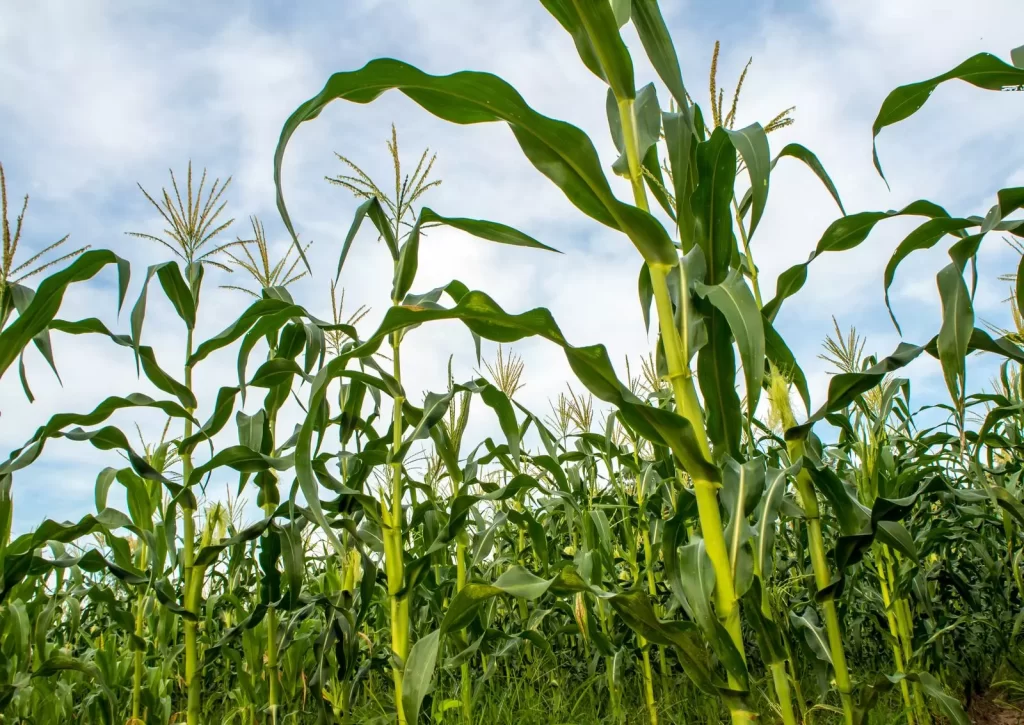
More people are becoming aware of the health impacts of eating foods with genetically modified (GM) traits.
Published research continues to establish correlations between GMOs and certain cancers, reproductive problems, immune imbalances, poor gut health, and autoimmune disorders.
There is also some speculation that genetically-modified plants may leak chemical compounds into the soil through their roots, negatively affecting communities of microorganisms.
2. Soil Contamination and Degradation
Environmental problems caused by man-made chemicals are clear. For example, there has been a 90% reduction in the Monarch butterfly population in the United States which can be linked to weed killers that contain glyphosate.
Any time industrial waste of any type contacts the soil it leaves behind chemicals and residues that change the composition of the soil leaving it less safe and fertile for natural organisms.
Soil degradation is the biological, chemical, and physical breakdown of the soil. It is less fertile, less safe, and less biodiverse than native soil.
3. Waste Production
The average person produces 4.3 pounds of waste per day, with the United States alone accounting for 220 million tons per year.
Much of this waste ends up in landfills, which generate enormous amounts of methane.
Methane ranks as one of the worst greenhouse gases because of its high global warming potential.
4. Waste Disposal
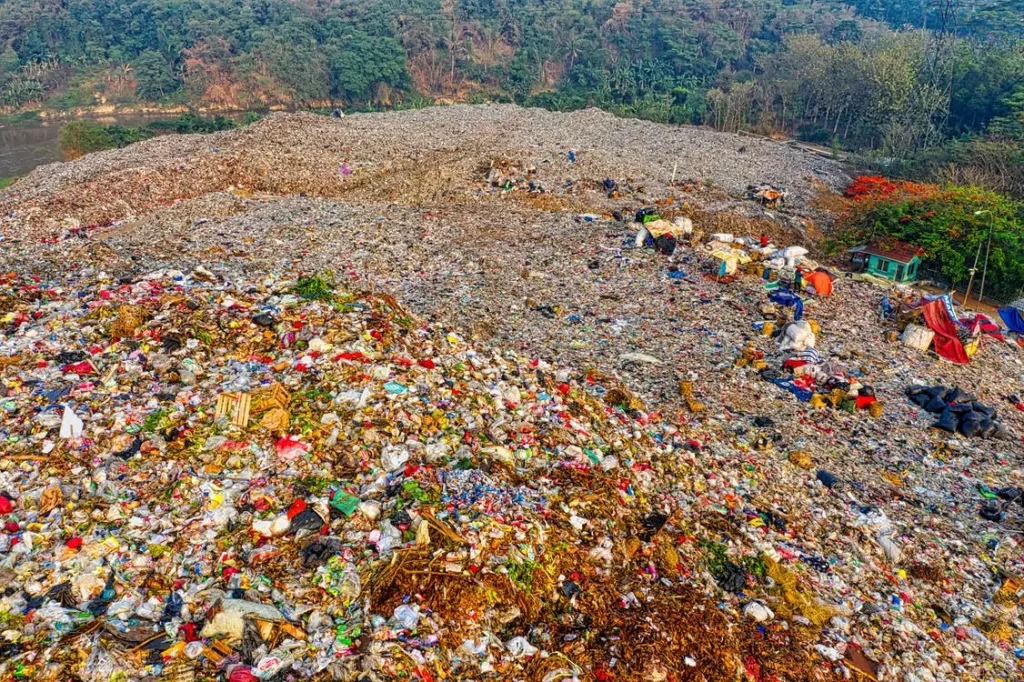
Our non-renewable waste goes into landfills or gets burned.
Burning can be a way to turn some waste into biomass which helps reduce the amount of waste in the landfill. Biomass advantages and disadvantages are hotly debated.
The main disadvantage of biomass burning is that it increases carbon emissions.
Methane output from landfills can be reduced by harvesting it for power generation.
This is done by steam methane reforming which converts the methane into hydrogen which can be burned for fuel.
Still, waste production and disposal are two of the major local environmental issues that every community has to come to terms with.
5. Population Growth
Many of the issues listed here result from the massive population growth that the earth has experienced in the last century.
The planet’s population grows by 1.13% per year, which works out to 80 million new people yearly.
This results in a number of issues, such as a lack of fresh water, habitat loss for wild animals, overuse of natural resources, and even species extinction.
As the population on our planet grows we have to get smarter about the ways that we use our natural resources so that we aren’t wasting what we have.
6. Water Pollution
Water is one of our top 5 natural resources and crucial to life on earth, yet more sources are being polluted through human activities each year.
On a global scale, 2 million tons of sewage, and agricultural and industrial waste enter the world’s water every day.
It disrupts marine life, sometimes alters reproductive cycles, and increases mortality rates.
The phytoplankton in the ocean provides 70% of the oxygen we breathe. We can’t afford to kill them off with chemicals and garbage.
7. Drinking Water Contamination

All water is vital to human survival, but drinking water is something that every person needs daily.
Much of the US drinking water is contaminated by chemicals, pharmaceuticals, heavy metals, bleach, and pesticides.
Of all the causes of environmental pollution, we should be a lot more concerned, as the human race, about the things we’re doing to destroy our own drinking water.
Municipal water treatment plants aim to clean the water before we drink it, but many of these particles are too small to get out of the water so we drink them to our detriment.
8. Deforestation
The demands of an increasing population have resulted in increasing levels of deforestation.
Here are the main causes of deforestation.
- Cities and towns clear forest land to spread outward from the downtown core to accommodate more residents. These trees are lost.
- Demand for lumber results in the clear-cutting of managed forests. These trees are usually replanted.
- New power plants burn biomass instead of fossil fuels to generate electricity. This biomass is usually chipped up trees. This results in widespread deforestation but the trees are usually replanted.
- Farming can result in some deforestation, but this is rare in the United States. This is more of a problem in the rainforests as we’ll discuss later.
Deforestation results in the loss of habitat for many species, placing many at risk and leading to large-scale extinction.
Furthermore, deforestation is estimated to produce 15% of the world’s greenhouse gas emissions. What’s worse is that biomass power plants also contribute to greenhouse emissions.
9. Urban Sprawl
What is urban sprawl? It is the fast, low-density expansion from urban areas into agricultural or undeveloped areas.
Urban sprawl has been linked to environmental issues like air and water pollution increases, in addition to the loss of food production and the creation of heat islands.
The concrete and asphalt that typifies urban sprawl absorb heat during the day and emit it late into the night so these areas can’t cool down.
This changes the environment permanently and results in the loss of biodiversity in these areas.
Satellite images produced by NASA have also shown how urban sprawl contributes to forest fragmentation, which often leads to total deforestation.
10. Overfishing
It is estimated that 63% of global fish stocks are now overfished. This means that fish reproduction can’t keep up with the level of harvesting.
This has led to many fishing fleets heading to new waters, which will only serve to deplete fish stocks further.
Overfishing leads to a misbalance of ocean life, severely affecting natural ecosystems in the process.
Furthermore, it also has negative effects on coastal communities that rely on fishing to support their economies.
Fisheries have to constrict harvesting further and further to ensure that fish populations can keep up with harvesting – creating further hardships on fishing communities.
11. Acid Rain
Acid rain comes as a result of air pollution, mostly through chemicals released into the environment when fuel is burned.
Its effects are most clearly seen in aquatic ecosystems, where increasing acidity in the water can lead to animal deaths.
It also causes various issues for trees. Though it doesn’t kill trees directly, acid rain does weaken them by damaging leaves, poisoning the trees, and limiting their available nutrients.
When combined with the issues of mechanical deforestation, it is no wonder that tree stands are becoming weaker and more susceptible to beetle infestations and wildfires.
12. Ozone Layer Depletion
Ozone depletion is caused by the release of chemicals, primarily chlorine and bromide, into the atmosphere.
A single atom of either has the potential to destroy thousands of ozone molecules before leaving the stratosphere.
Ozone depletion results in more UVB radiation reaching the Earth’s surface.
UVB has been linked to skin cancer and eye disease, plus it affects plant life and has been linked to a reduction of plankton in marine environments.
13. Ocean Acidification
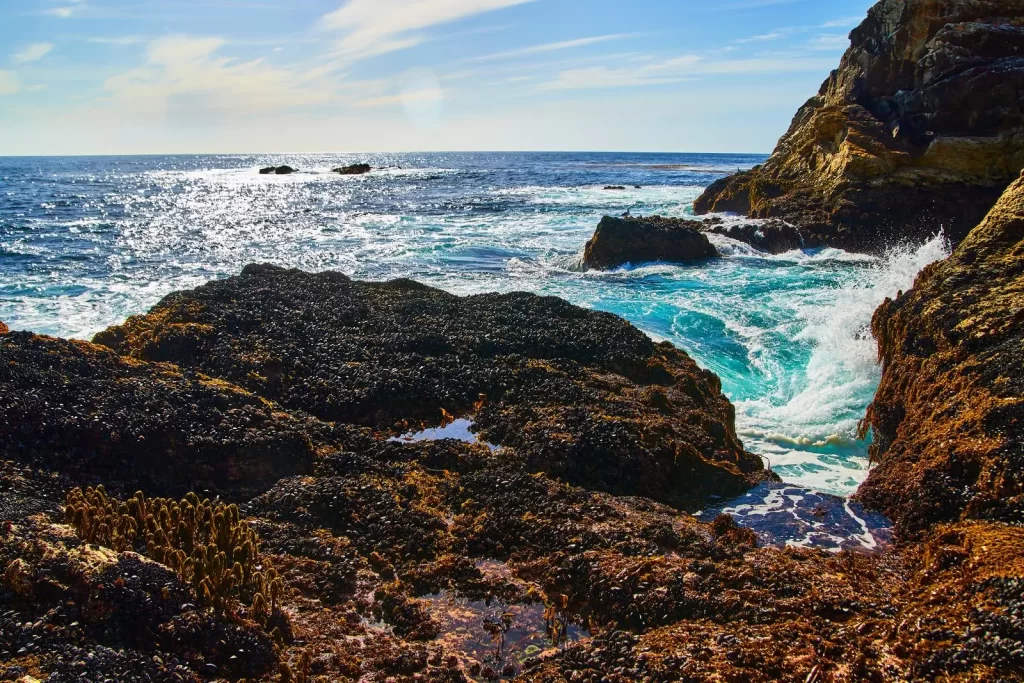
Ocean acidification is the term used to describe the continued lowering of the pH levels of the Earth’s oceans as a result of carbon dioxide emissions.
It is estimated that ocean acidity will increase by 150% by 2100 if efforts aren’t made to halt it.
This increase in acidification can have dire effect on calcifying species, such as shellfish.
This causes issues throughout the food chain and may lead to reductions in aquatic life that would otherwise not be affected by acidification.
Many people believe that the oceanic phenomenon known as El Niño is also caused by carbon dioxide emissions and global warming, but this is not true.
In fact, El Niño is an ancient weather pattern that we can’t control, but it does control the way we experience life and weather on this planet.
14. Air Pollution
Air pollution is becoming an increasingly dangerous problem, particularly in heavily-populated cities.
The World Health Organization (WHO) has found that 80% of people living in urban areas are exposed to poor air quality. This is detrimental for our health as the human race.
It is also directly linked to other environmental issues, such as acid rain and eutrophication – excess algae and contaminants in estuaries and coastal waters.
Animals and the human population are also at risk of developing a number of health problems due to air pollution.
The causes of air pollution are diverse, ranging from burning fossil fuels for electricity and transportation to massive wildfires caused by drought.
15. Lowered Biodiversity
Continued pollution and land overuse have resulted in lowered biodiversity.
Biodiversity is the variety of all types of life on planet earth. It includes everything from genes to biomes, from bacterial forms to ecological systems.
A lack of biodiversity means that future generations will have to deal with the increased vulnerability of plants to pests and fewer sources of fresh water.
This is because all life on planet earth is intertwined and dependent on each other for balance and survival. As species are endangered or brought to extinction the ripple effect goes through all living things.
Some studies have found that lowered biodiversity impacts ecosystems just as much as global warming and pollution, particularly in areas with higher amounts of species extinction.
16. The Nitrogen Cycle
With most of the focus being placed on the carbon cycle, the effects of human use of nitrogen often slip under the radar.
The nitrogen cycle is essential for life on earth. All living things need this abundant gas, but too much can be a bad thing.
It is estimated that nitrogen fertilizers are the primary cause of excess nitrogen that contaminates inland waterways and marine estuaries.
Excess levels of nitrogen in water can cause issues in marine ecosystems, primarily through overstimulation of plant and algae growth.
When excess nitrogen is washed into waterways it enriches the water too much and creates algal blooms and an abundance of water plants – eutrophication.
The problem is that when these plants die and decay they reduce the amount of absorbed oxygen in the water which is terrible for the other aquatic life.
It can create “dead zones” where fish and marine life don’t have the oxygen they need to survive.
17. Natural Resource Depletion
Recent studies have shown that humanity uses so many natural resources that we would need almost 1.5 Earths to cover our needs.
Natural resource depletion is a big deal. Some things we use are non-renewable. Other natural resources are renewable but we’re using them faster than they can replenish.
The natural resources that get used the fastest are:
- Freshwater
- Minerals
- Clean air
- Trees (deforestation)
- Clean soil
- Fish and marine animals
This is only set to increase as industrialization quickly progresses in population-dense nations like China and India.
Increased resource use is linked to a number of other environmental issues, such as air pollution and population growth.
There are many natural resource examples of things that we need for life as we know it that are non-renewable. The more we can exchange these things for renewables the better off we’ll be.
18. Transportation
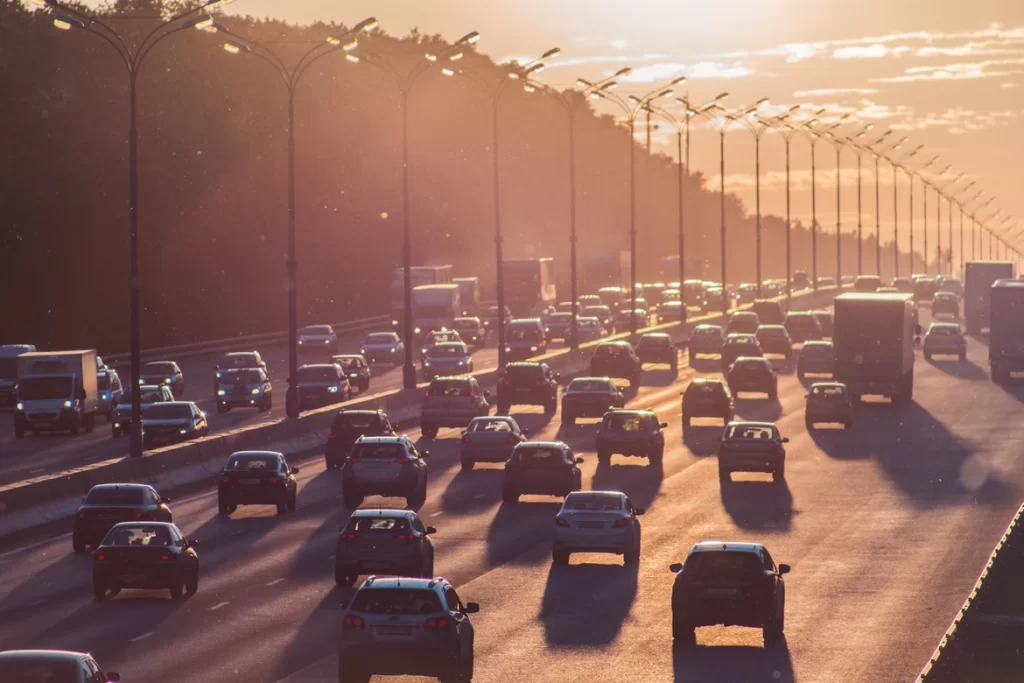
An ever-growing population needs transportation, much of which is fueled by the natural resources that emit greenhouse gases, such as petroleum.
In 2020, transportation accounted for 27% of all greenhouse gas emissions.
Transportation also contributes to a range of other environmental issues, such as the destruction of natural habitats and an increase in air pollution.
19. Polar Ice Caps
The issue of the melting of polar ice caps is a contentious one.
While in 2022 the Arctic ice pack seems to be rising to some extent, it is still far below the median expected range. The Greenland ice sheet continues with moderate levels of summer melting.
The Antarctic ice pack is experiencing slightly higher than average snow melt during the 2022 melt season. It has reached an all-time low in total mass.
While sea level rise has fallen well below the dire predictions given a couple of decades ago, it is indeed rising and will continue to rise as the global climate warms.
A slowing in the polar ice pack melting will help to delay catastrophic sea level rise, but it is inevitable as the polar ice continues to melt into the ocean.
If this pattern continues there could be significant coastal flooding in the next 100 years and contamination of drinking water in low-lying areas.
20. Climate Change
Climate change is a massive umbrella term to describe the effects of the major issues on this list.
The National Oceanic and Atmospheric Association (NOAA) reports that June 2022 saw a global temperature increase of 1.57 degrees over the 20th-century average temperature.
The effects of climate change are widespread, as it will cause issues with deforestation, water supplies, ocean rise, and ecosystem loss.
Each of these has widespread implications of its own, marking climate change as the major environmental issue the planet faces today.
The thing to remember about climate change is that it is not an entity on its own. It is an overarching term that describes all of the issues that ultimately cause global warming.
You can’t solve climate change. However, you can help protect rainforests, freshwater, fisheries, and help decrease nitrogen runoff. You can use less electricity and reduce your waste production.
These things, when done by a majority of people, can help solve climate change.
We can also invest in the exploration of alternative energy possibilities like tidal energy that could provide the electricity we need with zero greenhouse gas emissions.
21. Public Health Issues
Public health issues are becoming more of a problem as the world changes rapidly.
The increased population makes it easier for viruses and bacteria to adapt and spread rapidly.
The lack of clean water in much of the world makes people more susceptible to water-borne pathogens.
Our global system of rapid transportation allows pathogens to spread around the world in mere hours.
As the world grapples with unhealthy soil, diseased animal populations, overpopulation, and squalid living conditions, polluted water, and antibiotic-resistant bacteria, public health issues will only get worse.
22. Rainforest Loss
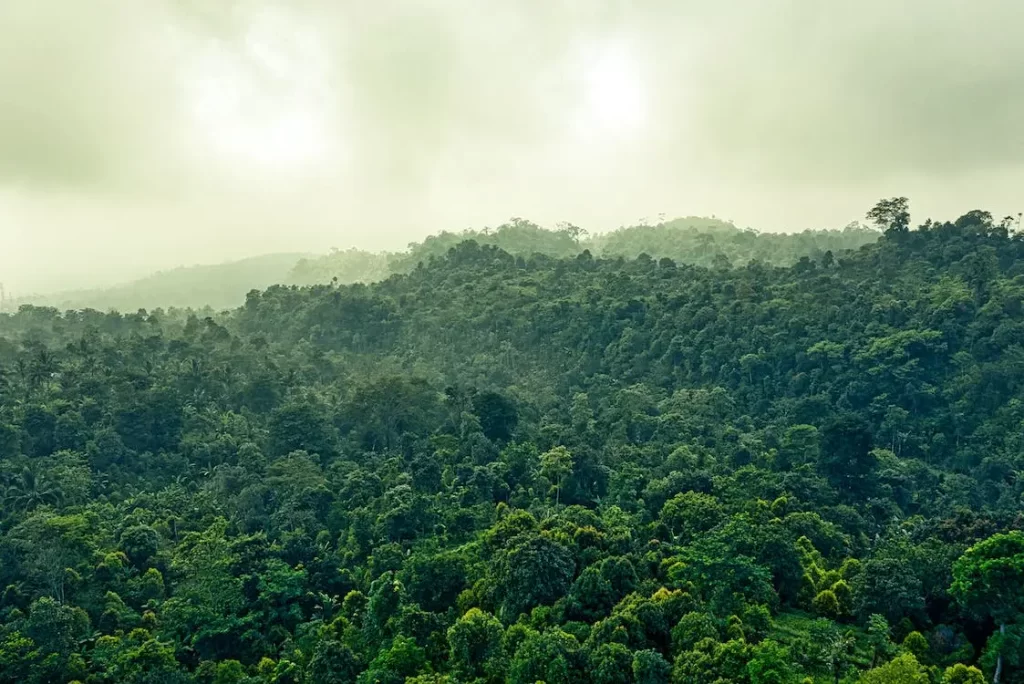
The rainforest provides about 9% of the oxygen in the world. That’s much less than the 20% usually touted in the press and by politicians, but it is still a significant amount.
The other thing to remember is that the rainforest is incredibly biodiverse. The oxygen produced by the rainforest is mostly used by the animals and people who live in the rainforest.
Still, without that oxygen supply, the entire ecosystem will fail.
Farming in the rainforest is a major contributor to the loss of global rainforests. Much work is being done to educate equatorial farmers about the importance of land management.
23. Ecosystem Destruction
Every change that we make to a river, lake, field, forest, plain, or mountain has an effect on the ecosystem in that area.
Ecosystem destruction occurs daily in massive amounts and we don’t think about it.
Even our efforts to harvest renewable energy sources like the sun, the wind, and running water end up causing ecosystem destruction.
Hydroelectric dams are some of the biggest ecosystem changers in the world. They change the flow of rivers and flood massive inland valleys to make water reservoirs.
Hydroelectric dams harness one of our best sources of renewable energy, but they change the landscape at the same time.
This type of ecosystem destruction is seen as preferable to burning fossil fuels, and it probably is, but it isn’t without consequences for the flora and fauna that are displaced by the construction and use.
Many plants and animals will change habitats and replenish themselves in the area, but some won’t.
Read More: What is the Definition of Flora and Fauna? This beginner’s guide to flora and fauna will answer all your questions.
24. Waste from Renewable Energy
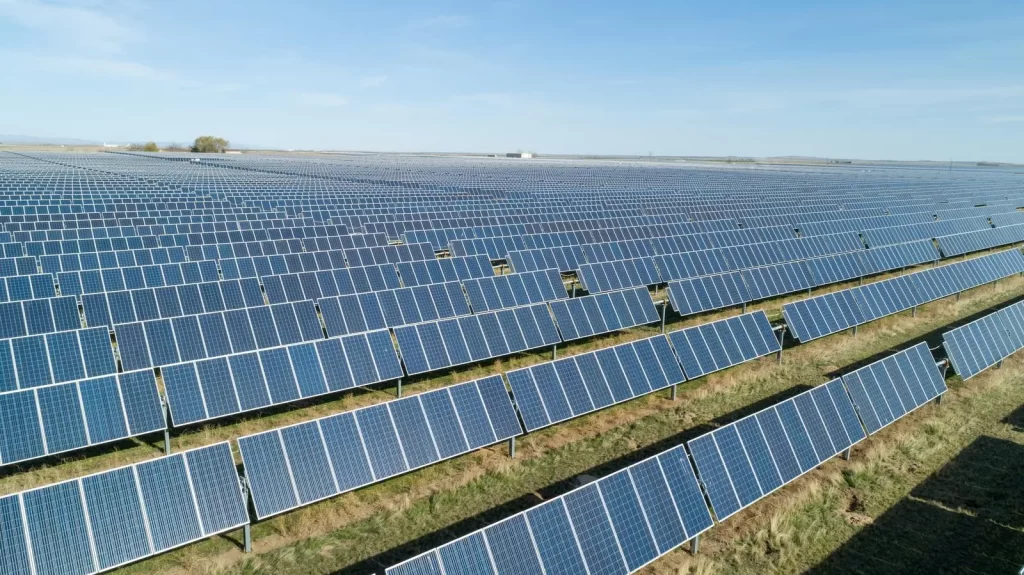
Renewable energy sources like the sun, wind, and water are excellent for offsetting our mining and burning of fossil fuels.
Renewable energy collectors like solar panels and wind turbines enable us to get some of the electricity we need without increasing global carbon emissions.
However, these renewables have their own toxic waste that the world has to grapple with.
Solar panels require massive amounts of coal and silica mining for manufacturing. This is a big carbon issue.
They also contain toxic metals like lead and mercury that can’t be put in a landfill when the solar panel is done working. Solar panel retirement is a global pollution problem.
Windmills have been a staple of human productivity for centuries, but they’re constructed differently now, and the new materials create environmental problems.
Instead of using natural materials like stone and wood to build them, wind turbines are made of fiberglass.
Wind turbines have some recyclable parts, especially in the turbine area. However, all of the fiberglass turbine blades and the massive towers end up in the landfill.
Renewable energy sources will never be truly clean until there are recycling technologies in place to take care of the waste.
25. Food Safety
The global food supply gets less safe as the population grows.
- GMO seedstock is used to increase crop yields
- GMO plants help reduce the need for chemical pesticides, but they’re detrimental to human health
- Global transportation of food increases cases of bacterial contamination
- Global transportation increases the risk of consuming things like lead and mercury
- Nitrogen fertilizers help to increase crop yield, but their overuse leads to water contamination
A major cause for food safety concerns is the global dependence on snacks and convenience foods. These foods create an exorbitant demand for staple crops like wheat and sugar.
These crops must be grown with maximum speed and efficiency to meet demand – which means they’re grown using questionable methods.
26. Mining
Mining is carried out globally and gives us everything from table salt and diamonds to coal and uranium.
Mining destroys ecosystems and contaminates the soil. Often the runoff from open pit mining creates huge toxic waste pools that must be carefully mitigated to keep from poisoning the local population.
We can’t just stop mining. We need the mineral resources that we extract from the ground for everything we produce including wind turbines and solar panels.
Using our natural mineral resources more wisely and recycling everything possible will help us decrease the impact of mining.
One of the major benefits of recycling electronics is that the recovery of precious metals and rare earth metals will help make these natural resources last longer.
27. Nuclear Waste
Nuclear energy pros and cons are often in the public eye. Nuclear energy supplies about 56% of the energy used in the United States.
Nuclear energy is produced with zero carbon output. It is completely clean energy.
However, it produces waste. Not a ton of waste. All of the spent uranium in the history of the United States nuclear power program would fit in a single football field.
However, the spent fuel rods are still highly radioactive even after they’re done spending 6 or 7 years in a nuclear reactor producing electricity.
They have to be cooled in water for about 10 years and then stored in dry storage boxes for the foreseeable future.
The Pacific Northwest National Laboratory and others are working to create facilities to recycle spent uranium and design new nuclear facilities that can use spent fuel rods to generate electricity.
Wondering how nuclear waste is stored? Here’s everything you ever wanted to know about the safe storage of nuclear waste.
28. Nanoparticles
Atmospheric nanoparticles are produced by burning biomass, coal, and other fuels that create exhaust. Larger nanoparticles settle out onto the ground and into water. The smallest nanoparticles can be inhaled.
Inhaling nanoparticles creates a cascade of health detriments to humans and animals.
Nanoparticles increase chemical concentrations in the atmosphere and contaminate water sources.
29. Light Pollution
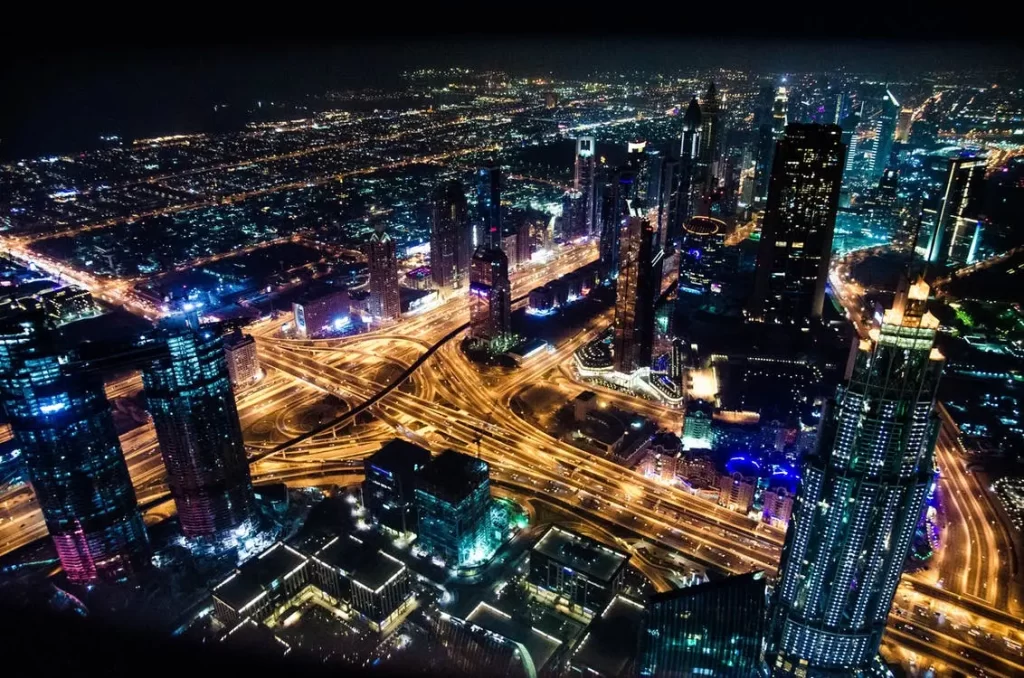
Light pollution occurs from outdoor lights that are left on all night.
Light pollution doesn’t just make it hard to see the stars. It also disrupts the migration and feeding patterns of nocturnal animals.
Sea turtles are one of the most commonly discussed victims of light pollution.
Sea turtle mothers don’t want to lay their eggs near artificial light. It disorients them and makes them lay in less than optimal places where the hatchlings have little chance of survival.
Sea turtle hatchlings also rely on the visual cue of moonlight to find their way across the beach and to the water. Artificial lighting along the shore makes them disoriented.
This disorientation causes hatchlings to go the wrong way – into suburban areas – and die because they can’t reach the water.
By turning off lights and using red (narrow spectrum) lights along the Sea Turtle Conservancy has shown a significant reduction in sea turtle disorientation along the beach.
30. Space Pollution

Space pollution is an up-and-coming crisis for our planet.
The race to increase satellite presence in earth’s orbit has created a mass of unrecoverable machinery that is orbiting our planet at 17,000 miles per hour.
As of January 2022, there are 8,261 manmade objects orbiting the earth. These are mostly satellites. Because there is no way to recover a dead satellite, 42% of those satellites are space junk.
We are ultimately facing a massive buildup of space junk in orbit around our planet that could make future space travel impossible until we figure out how to deorbit and dispose of all that junk.
Before we start colonizing the moon and other planets in our solar system we have to learn to take care of the space we have.
What Are the 5 Major Environmental Problems?
The top 5 environmental problems are ones that daily affect the lives of people.
- Drinking water contamination – the developing world has little access to clean water in the first place. The developed world has drinking water loaded with pollutants.
- Waste Disposal – The amount of non-renewable waste generated globally is staggering. Piles of waste mar some areas, but the greenhouse gas emitted by decaying waste affects everyone.
- Ozone Layer Depletion – The increasing levels of UVB rays striking the earth are a major cause of skin cancer and decreasing phytoplankton levels in the ocean.
- Air Pollution – Particulates in the air we breathe go into our lungs and cause health ramifications throughout the body.
- Natural Resource Depletion – The global population is using natural resources at an alarming rate. Even renewable resources like water and plants need to be used at a rate that allows them to replenish.
There are more environmental problems that affect our lives like deforestation, but these 5 impact us daily.
What Are the Causes of Environmental Problems?
There are so many causes of environmental problems and they’re intertwined. It’s hard to separate the cascade of effects into a step-by-step progression. Here are some causes of environmental issues.
- High demand for a resource – High demand makes it lucrative for companies to harvest, mine, or in some way capture the resource that’s highly desirable for energy, food, electronics, transportation, or luxury.
- Uninhibited Consumption – The majority of people believe that their own consumption patterns don’t matter. Added together, the high consumption patterns of billions of people create a problem.
- Lack of alternative resources – Some resources are being gradually replaced by renewable counterparts. This isn’t always possible, so the resource will be used until it is gone. Recycling can help extend the supply of some natural resources.
- Lack of education – Many people don’t see the need to conserve resources, use renewable or recyclable items, and try to decrease their own resource demand.
Local Environmental Issues
Your local environmental issues will be different depending on where you live, but we all have issues that we must wrestle with locally.
- Air pollution – how often and how far we choose to drive in fossil fuel vehicles has a direct impact on the air quality in our communities.
- Waste disposal – waste generated in communities usually stays somewhere in the local area. Even if it gets trucked to a different community it’s a big problem that communities need to deal with at the local level.
- Clean Water – communities in the West are wrestling with water management issues as water supplies established 90 years ago dry up. Other communities have flooding that threatens clean water supplies. Residents have to conserve clean water for survival.
Communities on waterways must ensure that the waterways are clean, fisheries are thriving, and natural resources are not overtaxed.
Final Thoughts
The impact that human activities have on the environment around us is undeniable and more studies are being conducted each year to show the extent of the issue.
This list of environmental issues is long, but it’s not comprehensive. There are more problems than we have the space to discuss.
More needs to be done to remedy the major environmental issues that affect us today for our own good and that of future generations of humans, animals, and plants.
The good news is that many of these environmental issues can be controlled. By making adjustments, humanity can have a direct and positive impact on the environment.
Which issues do you feel are the most vital? Are there environmental issues that you feel should be included on our list? Let us know in the comments below!
